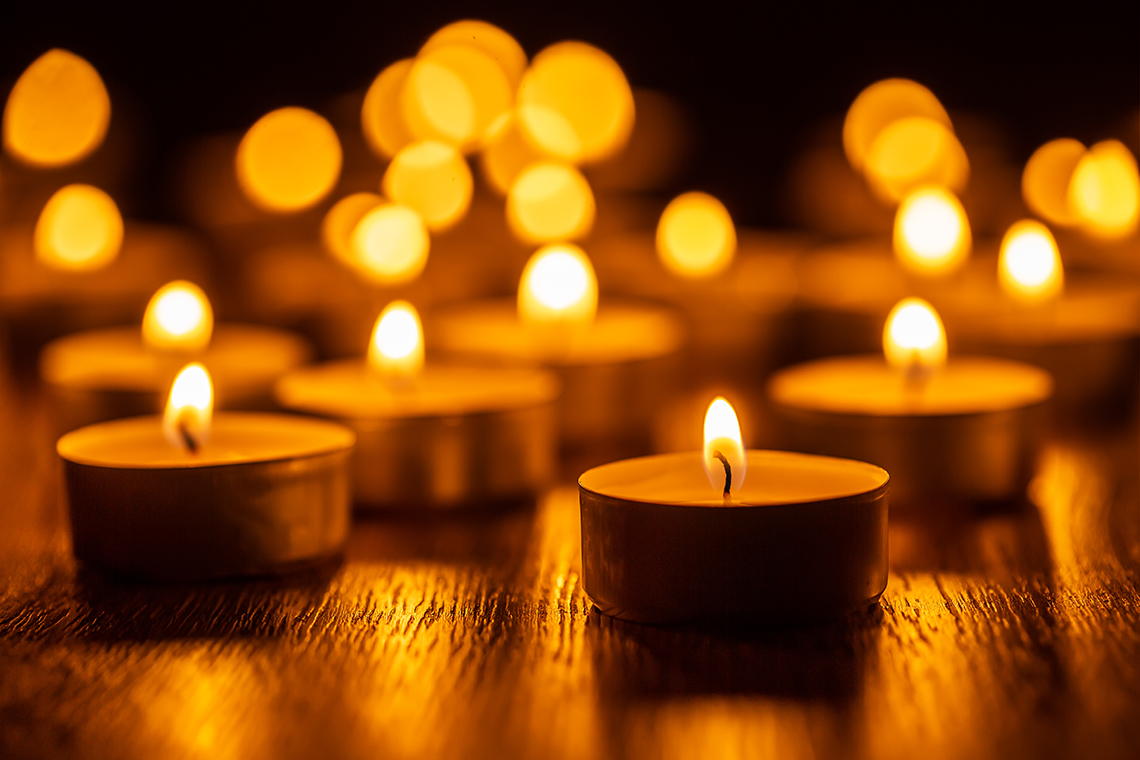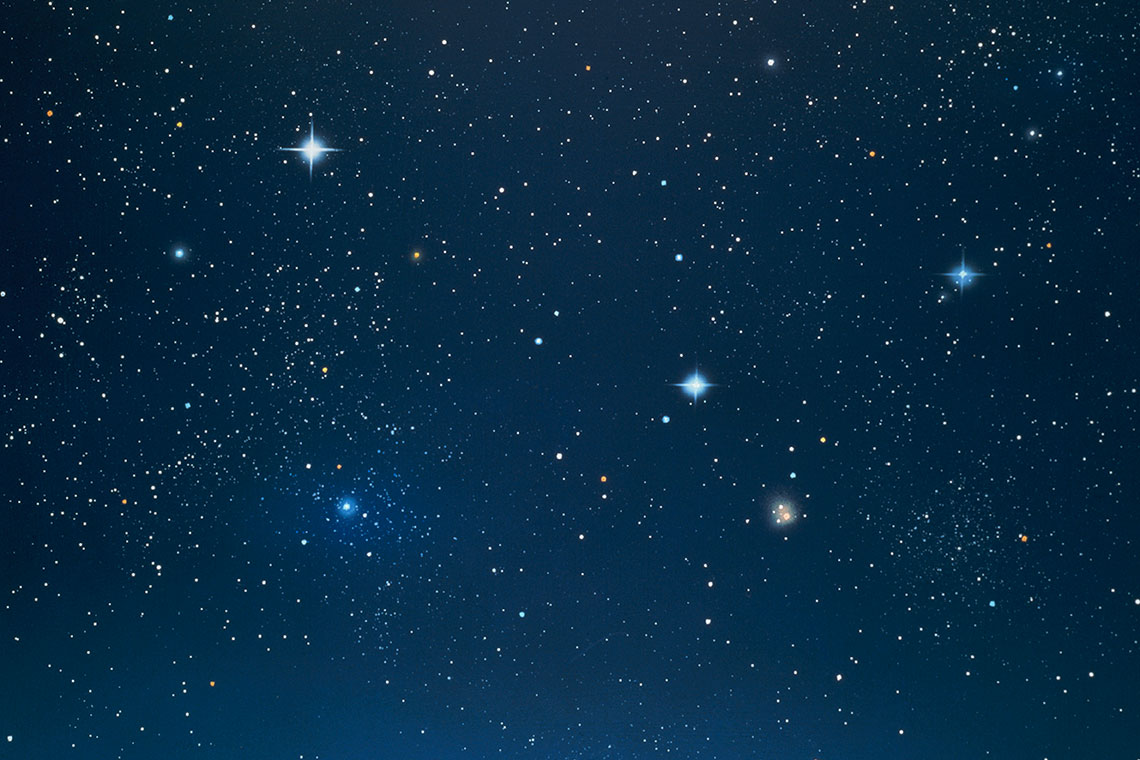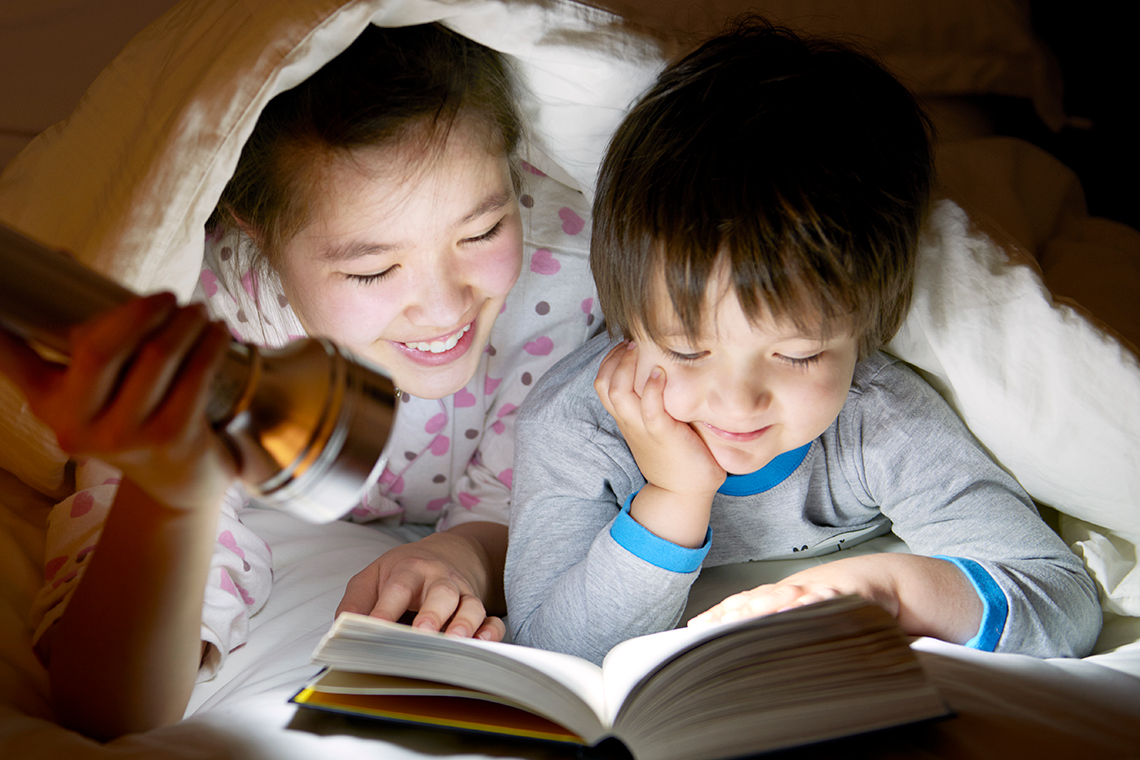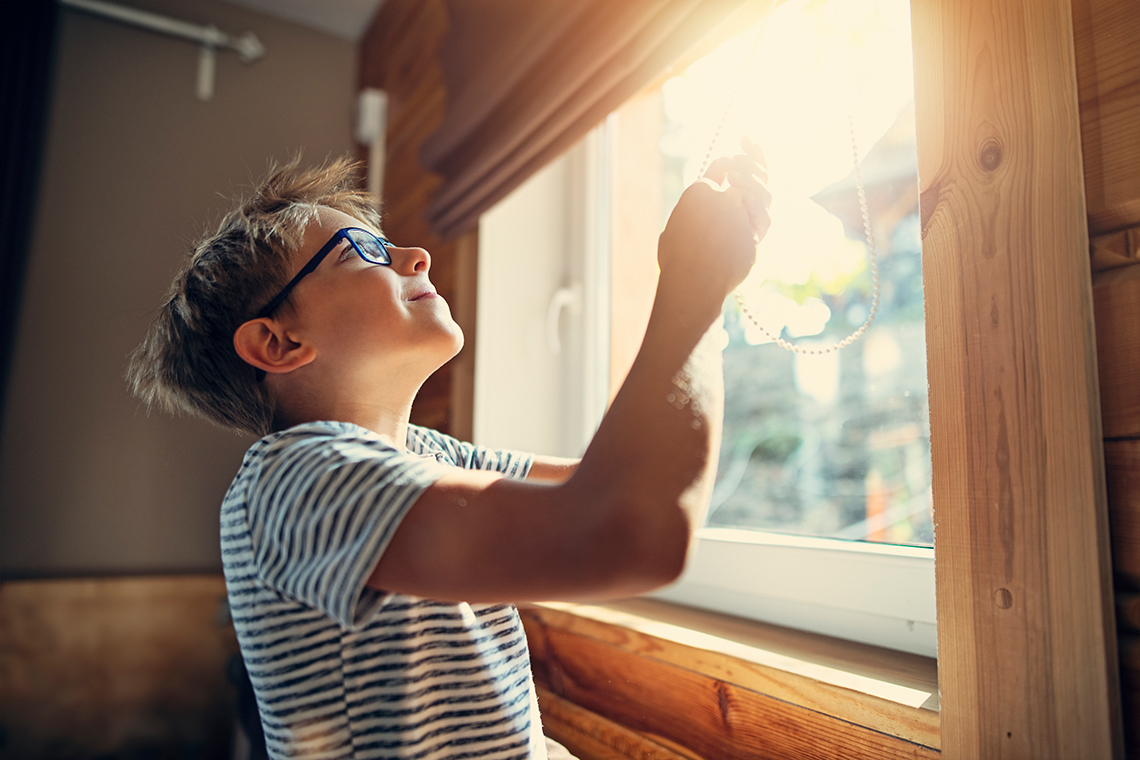Minds On
Sources of light
If someone were to ask you the question, “What does it mean to be a source of light?”, how would you answer them?
Explore the following images and descriptions to help you begin to create a list of items that are sources of light. Record your list using a method of your choice, such as in print, digitally or using an audio recording.
Action
Innovation in Canada
This learning activity features emerging technologies, STEM contributions, and Canadian innovations that are making a difference.

Exploring light
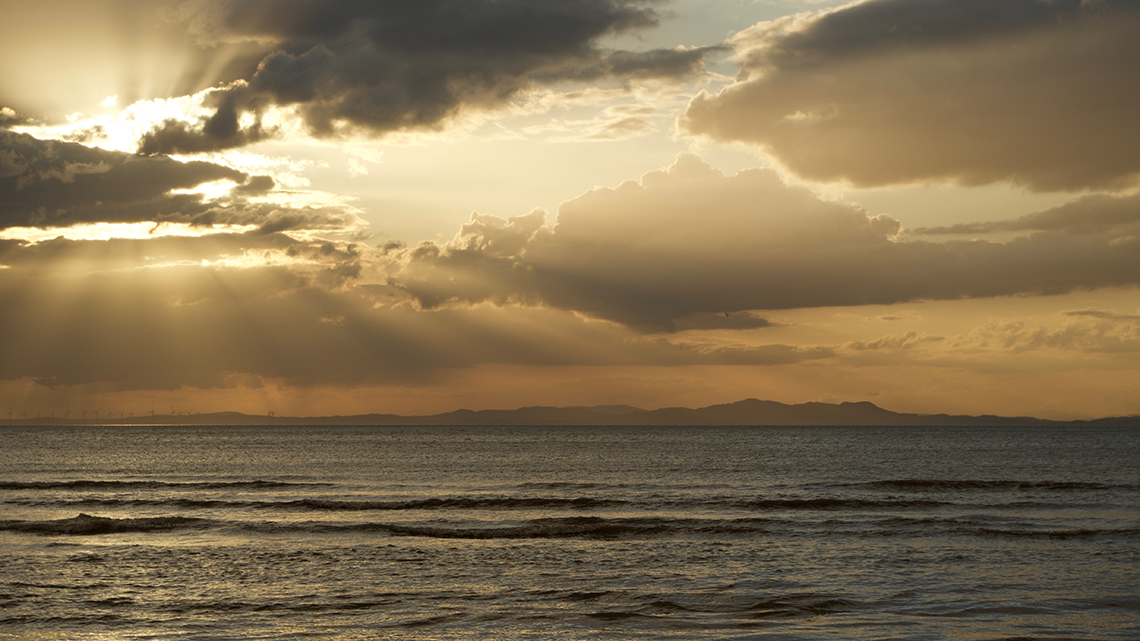
Light is a form of energy that living things rely on to navigate the world. While all forms of light help to make things visible, they come from different sources: either artificial or natural.
Press ‘Hint’ to access a definition of the term artificial.
Artificial: something that is produced by humans or human skill.
Brainstorm
Natural or artificial?
Consider how you classified each source of light. What criteria did you use to decide if the source was natural or artificial?
Record your thinking using a method of your choice. If possible, share your thoughts with a partner.
Press ‘Answer Key’ to check your answers with the correct sources of light.
|
Emitter of light |
Source type |
|---|---|
|
lightbulb |
artificial |
|
moon |
natural |
|
sun |
natural |
|
fire |
natural |
|
flashlight |
artificial |
|
fireworks |
artificial |
|
fireflies |
natural |
|
glowstick |
artificial |
The path of light
Did you know that, in order for light to be visible in our atmosphere, it travels in straight “lines” from the Sun toward the Earth? Light travels in what are called “waves”, and these waves come from the Sun in straight lines known as “light rays”.

Light travels in straight lines known as “rays”.
When light rays make contact with an object, that is how the object becomes visible to the eye. Because these straight rays of light cannot “bend” to avoid hitting an object, they will be reflected, absorbed or refracted by the object or material in their way.
Examine the following animation of how light rays will either be reflected, absorbed or refracted when making contact with an object.
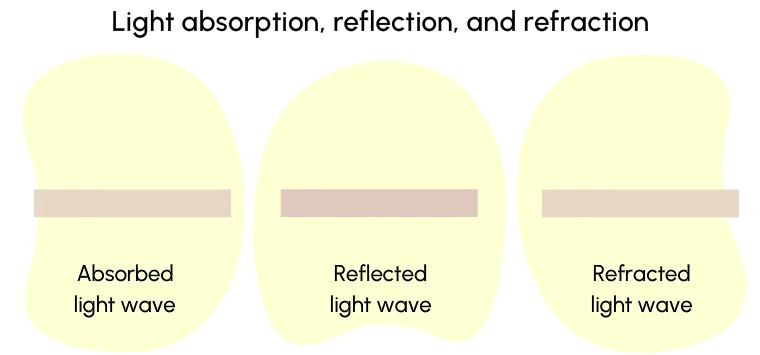
For reflection, light rays can be pictured traveling towards an object labelled “reflective surface” and bouncing off to travel back in the opposite direction. For absorption, several arrows labelled “incoming light rays” travel towards an object labelled “absorbing material” and a few arrows labelled “outgoing light rays” are pictured passing through continuing in the same direction. For refraction, light ray arrows are pictured travelling upwards from the left towards a triangle labelled “glass prism” and out from the triangle in a downwards motion but still travelling towards the right.
Press the following tabs to access more detailed descriptions of the process of light reflection, absorption and refraction.

Reflection
Light is considered to be “reflected” when its rays hit an object and bounce off. Reflected light is what allows human and animal eyes to see, because the eye can only “see” objects when light reflects off them. For example, in the daytime, the light from the sun shines down and reflects off an object like a playground slide, making it visible.

Absorption
Some materials soak up or “absorb” light, rather than reflecting it, which means that, when the travelling light rays hit these materials, they will stop (instead of travelling through or bouncing off). Materials that are not transparent are called “opaque,” and they absorb the most light.

Refraction
Light refraction occurs when light rays contact an object or material that is transparent (such as water or a glass prism), and the light rays “bend” or change direction slightly after passing through the object.
Use your learning about the properties of light to answer the following true or false questions.
Select the correct answer, then press ‘Check Answer’ to see how you did.
Student Success
Think about it
Choose one of the statements that is false and explain why it is false. Could you also rewrite the statement to make it true?
Record your thoughts using a method of your choice, such as in print, digitally, or using an audio recording.
Note to teachers: See your teacher guide for collaboration tools, ideas and suggestions.
Light and heat
Some sources of light give off heat, and others do not. Let’s start by examining some that do.
Press the following tabs to explore three examples of light sources that give off heat.
Explore the following video about the Sun to learn more about how it emits heat and light.
A fire can give off heat because it is a combination of fuel (such as the wood) interacting with oxygen in a chemical reaction. When this happens, it creates light and heat.
Examine the following clip of a campfire.
Fireworks can give off heat for the same reason as fire. They are the result of a chemical reaction when fuel (in this case, a powder made with charcoal) interacts with oxygen. In the case of fireworks, there is also a chemical mixture that includes different colours.
Explore the following clip to examine fireworks in action.
Check your understanding
Can you identify some more examples of sources of light that do and do not emit heat?
For each sentence, select the missing word from the drop-down menu.
Experimenting with light absorption
Did you know that objects that are different colours absorb light differently?
Objects that have darker colours absorb more sunlight than those that are lighter colours. Black and navy blue are two colours that warm fastest in the sun. Pale pink and cream are two colours that warm the slowest in the sun. Why do you think that is?
Press ‘Answer’ to access an explanation of why some colours warm faster in the sun than others.
All colours have oxygen in them, but some colours have more oxygen in them than others, and because of this, they heat up faster in the light of the sun.
Some colours and shades that contain more oxygen and heat faster:
- black, silver, navy blue, brown, dark green, dark red
Some colours and shades that contain less oxygen and heat slower:
- white, cream, pale blue, pale green, pale pink
Let’s investigate a demonstration video that explores the relationship between colour and heat. Before beginning, explore the following video that outlines the steps for the Scientific Experimentation Process. For this activity, we will focus on the hypothesis and observation sections.
Check out this video to learn about the steps of the Scientific Experimentation Process.
Before we begin our investigation, let’s make a prediction based on the following facts and question:
Four different coloured cups contain water. The colours of the cups are black, blue, red, and white. Each cup will be heated for 60 minutes using light, which is being used as a substitute for the sun.
Which colours of cup do you think will have warmer water at the end of the 60 minutes? Why?
Record your hypothesis using a method of your choice.
Explore the video demonstration to observe the experiment in action.
If you are able, conduct this experiment on your own with support from a trusted adult. Use the materials and follow the procedure used by the demonstrator in the video.
Pause and Reflect
Reflect
Answer the following reflection questions using a method of your choice, such as in print, digitally or using an audio recording.
- What information was missing from the demonstration video?
- Even though the video did not share the results, which cups do you think would be warmer than others? Why?
Consolidation
Putting it all together
Let’s explore the animation that shows the properties of light again.
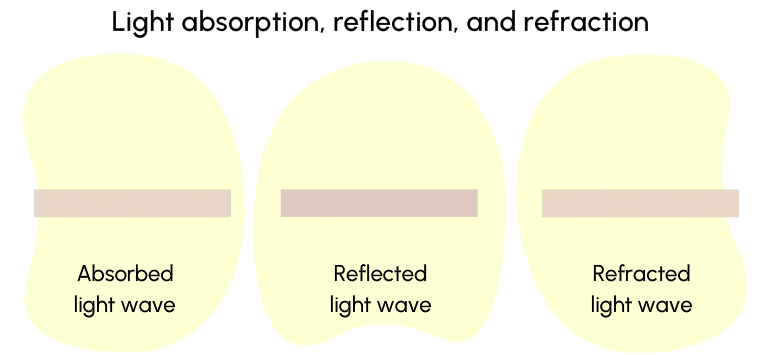
For reflection, light rays can be pictured traveling towards an object labelled "reflective surface” and bouncing off to travel back in the opposite direction. For absorption, several arrows labelled “incoming light rays” travel towards an object labelled “absorbing "material” and a few arrows labelled “outgoing light rays” are pictured passing through continuing in the same direction. For refraction, light ray arrows are pictured travelling upwards from the left towards a triangle labelled “glass prism” and out from the triangle in a downwards motion but still travelling towards the right.
How would you explain what is happening with the light in this animation in your own words? Record your thinking using a method of your choice.
Applying our learning
Consider the following questions and record your ideas for each using a method of your choice, such as in print, digitally, or using an audio recording.
- If certain colours absorb sunlight faster than others, how could that affect people or animals in their everyday lives? How might it affect them in the summer months, when the days are long and warmer?
- If you were asked to design an experiment, similar to the demonstration video, that could test some of the other science concepts discussed in this learning activity, what might you create? Examine the following list of science concepts that might be the topic of your experiment.
Possible topics for your experiment
When designing your experiment, consider the steps of the experimentation process:
- what materials could you use?
- what question would you be trying to solve?
- what would your procedure be?
- what would you want to conclude?
Record your ideas using a method of your choice.
Reflection
As you read through these descriptions, which sentence best describes how you are feeling about your understanding of this learning activity? Press the button that is beside this sentence.
I feel…
Now, record your ideas using a voice recorder, speech-to-text, or writing tool.
